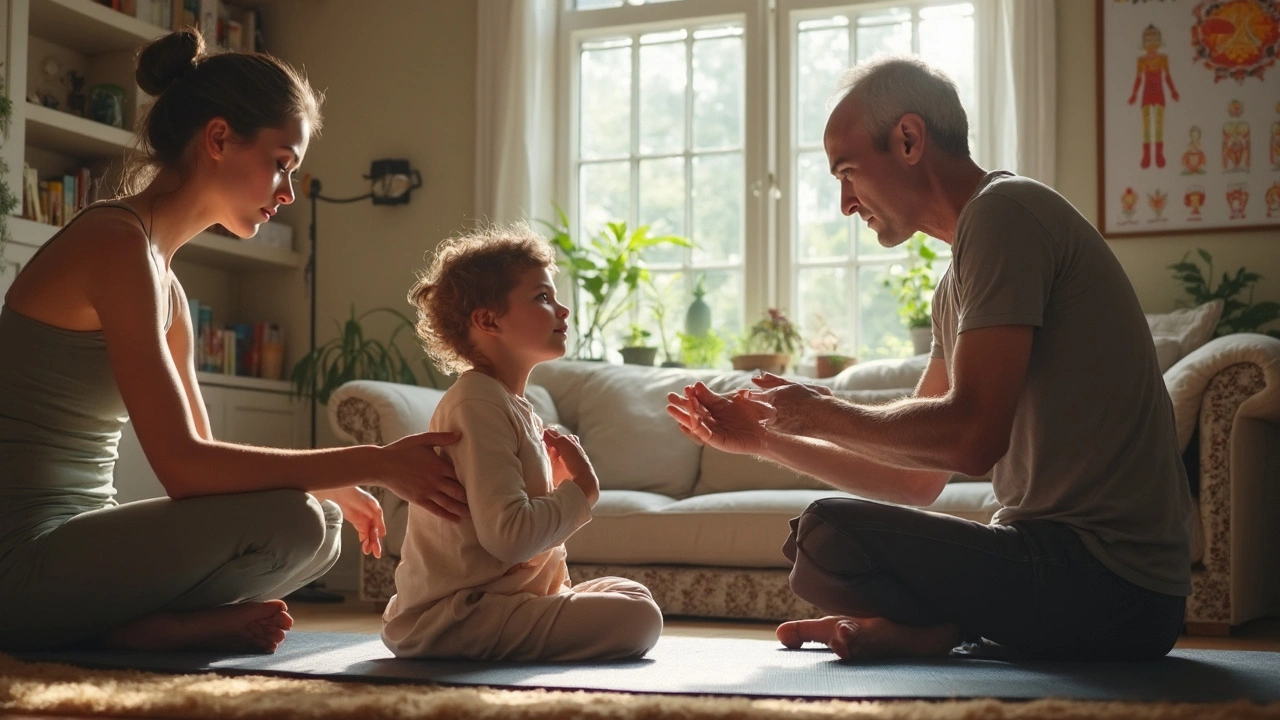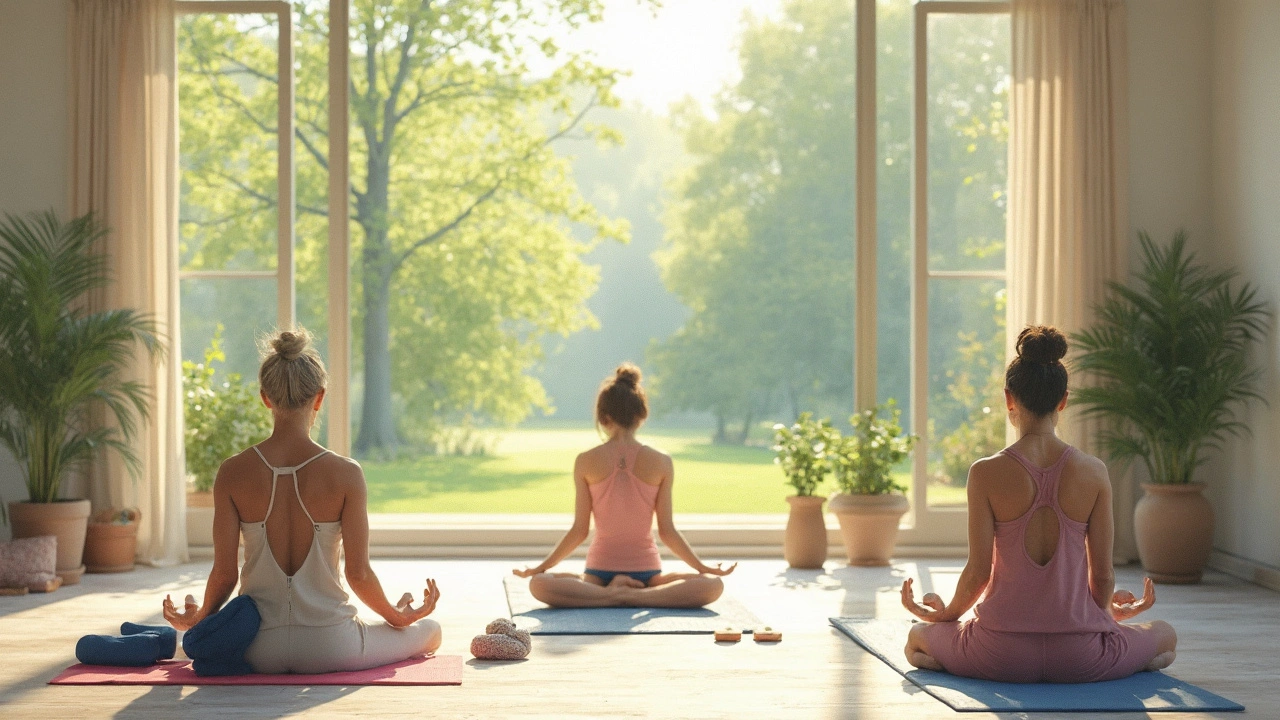Ever felt like your body’s trying to tell you something, but you can’t put your finger on it? Maybe the aches are subtle, like a dull neck tension from hunching over your laptop or a nagging headache that creeps in after wrangling your kids all afternoon. Acu-Yoga just might be the missing link between ancient healing wisdom and modern-day stress. This approach doesn’t get much spotlight, but it quietly revolutionizes home wellness for thousands of folks who crave relief without complicated routines or pharmaceuticals. Whether you’re a skeptic, a self-care lover, or a parent watching their back (literally), there’s something real to this.
What Exactly is Acu-Yoga?
Imagine mashing up two time-tested Eastern practices: Yoga, with all its stretching, breathing, and awareness, and acupressure, with its finger-magic on the body’s energy points. That’s the guts of Acu-Yoga. The idea: yoga wakes up your body and mind, while acupressure triggers those healing spots you hear about in acupuncture—but no needles required. You end up with a routine that targets both your physical knots and your underlying energy flow.
Acu-Yoga started gaining momentum in the late 1970s. Michael Reed Gach, one of the big names behind it, wrote the bestseller “Acupressure’s Potent Points,” which took acupressure mainstream. He found that pressing into certain points during stretches or simple yoga poses boosted energy, reduced pain, and basically gave the average Joe more say in their own health.
Here’s what folks need to know: research published in The Journal of Alternative and Complementary Medicine says that acupressure and yoga individually reduce anxiety, tension headaches, and chronic pain. Mixing them amplifies those effects. There’s no mysticism or weird gadgetry, just learning what points to press and how to move.
Moms and dads juggle work, chores, and endless playdates—sometimes self-care takes a backseat. Acu-Yoga needs no fancy getup or gym. My own daughter Charlotte gets fidgety before bedtime, so we try gentle child’s pose with temple acupressure. Ten minutes later, she’s calmer, and my headache fades too. That’s the beauty—this isn’t a rigid system. Acu-Yoga fits in when and where you need it.
The Science Behind Acu-Yoga: How Does It Work?
Let’s ditch the “woo-woo” reputation. Underneath everything, Acu-Yoga rests on real body mechanics and ancient theory. Acupressure’s foundation is the idea of meridians—channels flowing with energy, or “qi.” Pressing points on these lines can regulate digestion, improve mood, or relieve specific aches. Western science, meanwhile, sees real physiological effects: pressure triggers endorphin release, increases blood flow, and chills out your nervous system. It’s the same reason massages feel amazing, but targeted like a sniper.
As for yoga, it’s not just for flexible Instagram models. Studies from Harvard Medical School show that regular yoga can reduce blood pressure, boost balance, and even help manage depression. Add mindful breathing, and suddenly you’re handling stress like a pro. The kicker: when you combine the acupressure points with stretching and breathwork, you’re hitting multiple problems at once.
Here’s a quick rundown of three body systems affected by Acu-Yoga (with some specifics in the table below):
- Nervous system: Calms fight-or-flight response, soothes anxiety.
- Musculoskeletal system: Relieves tension, increases flexibility.
- Endocrine system: Regulates hormones and improves sleep cycles.
| Body System | Yoga Effect | Acupressure Effect | Combined Result |
|---|---|---|---|
| Nervous | Decreases stress | Reduces anxiety | Deep relaxation, sharper focus |
| Musculoskeletal | Increases flexibility | Lessens muscle pain | Easier movement, fewer aches |
| Endocrine | Balances hormones | Improves sleep | Better mood, rested body |
I’ve seen people in local wellness workshops marvel at how pressing the “third eye” (between the eyebrows) while in a forward fold wiped away stress migraines in minutes. A meta-analysis from 2022 out of the University of Toronto flagged that combining these techniques made pain relief last up to three times longer than stretching alone. When real-world results line up with the science, it’s hard not to take notice.

Key Acu-Yoga Techniques Everyone Can Try
Wondering where to start? Here’s the sweet spot: you don’t need to be a yogi, nor memorize a bunch of medical charts. Most beginners start with just a few poses and points. The trick is in matching the right pressure spot to the right stretch or position.
Let’s break it down step by step:
- Child’s Pose + Third Eye Press: Kneel, sit back, and reach arms forward so your forehead touches the ground. While in position, gently press between your eyebrows. Great for tension headaches.
- Seated Forward Bend + LI4 (Hand Point): Stretch your legs out, fold forward. With one hand, use your thumb and index finger to squeeze the web between the other thumb and forefinger (it’s a famed point for headache relief).
- Reclining Twist + Stomach 36 (Below the knee): While lying on your back, twist both knees to one side. With your hand, use two fingers to press about four fingers’ width below your kneecap—said to aid digestion and boost energy.
Here’s a handy way to try it:
- Pick a yoga pose that feels good but safe (no pain!).
- Add gentle pressure, using just your thumb or fingertip, to the matching acupressure point. Hold for 30 to 60 seconds—aim for a dull, satisfying ache, not sharp pain.
- Breathe deep, slowly. That’s the magic sauce—breathing sends relaxation signals.
Consistency beats perfection. Even five minutes a few times a week can start to break a stress loop. If motivation slips, make it a ritual. I get Oliver and Charlotte involved by making up silly names for poses (“sleepy bear” for child’s pose) and racing to see who remembers the most points.
Real-Life Benefits and Who Can Use Acu-Yoga
Acu-Yoga isn’t trending just because it’s easy to do at home—it delivers. For busy parents, older adults, and regular folks worn thin by modern life, these bite-sized routines punch way above their weight.
Here’s what the word on the street and medical studies have found:
- Chronic back and neck pain can improve—one 2023 UK study tracked office workers who tried Acu-Yoga three times a week. Nearly 70% reported less pain and more energy.
- It can dial down tension headaches fast, and sometimes even prevent them if practiced regularly.
- It helps with sleep. A big 2021 survey in California found folks using Acu-Yoga fell asleep faster and woke up feeling clearer-headed.
- Older adults love how it maintains mobility without risking falls. Poses are adapted to sitting or bed routines if needed.
- It’s a lifesaver during cold and allergy season—pressing sinus points with gentle stretches can actually help drain stuffiness.
- For anxious kids or teens, playful Acu-Yoga helps them wind down—Oliver swears by a ten-breath “starfish pose” with acupressure on his palm before big school events.
People with chronic conditions (like arthritis or migraines) often report fewer flare-ups, though it’s not a magic bullet. The main catch: don’t overdo deep pressure, and skip spots near an open wound or bruise. Pregnant women should check with their doc, since some points are off-limits.
Curious about numbers? Check this out:
| Issue | Reported Improvement (%) | Time to Notice Change |
|---|---|---|
| Back/Neck pain | 70 | 2-4 weeks |
| Anxiety/Stress | 60 | 3 weeks |
| Headaches | 85 | Immediate to 1 week |
| Sleep quality | 55 | 1-2 weeks |
Acu-yoga works for all ages and fitness levels. The only real obstacle is forgetting to do it—which, in my house, usually means the cat climbs onto my mat to steal the spotlight.

How to Create an Acu-Yoga Habit at Home
Okay, so you want to try this out, but your daily schedule feels like juggling flaming bowling pins. Don’t overthink it. The smallest, messiest start is better than no start at all.
- Keep it visible. Place a yoga mat in your living room, or keep a sticky note with a pose and point combo on your bathroom mirror.
- Use tech for good: Set a reminder on your phone. There are free Acu-Yoga routines on apps and YouTube—look for videos from folks with credentials, like Michael Reed Gach or certified yoga therapists.
- Make it social. If you’ve got kids, turn it into a pre-bed tradition or get goofy with names and animal sounds. Grownups can do it with a partner—swap feedback on what feels best.
- Track tiny wins. Notice how your energy, sleep, or pain shifts, even if the change is subtle. Write it down for a couple of weeks (yes, dads journal too—it works).
- Listen to your body, not your ego. Skip moves or points that hurt or cause wooziness. The right amount of pressure feels good, not sharp.
- Stick to the basics. You really only need five or six go-to pose/point combos to see real results. Bonus points if you throw in a relaxing playlist.
For skeptics: test-drive it. Next time you have a headache or stiff shoulders, spend five minutes in child’s pose and press those temples. If you feel calmer, Acu-Yoga’s doing its job.
Sometimes my parenting days feel like hurdle races—battling to get the kids to school, cleaning epic messes, and chasing my own work. Ten minutes of Acu-Yoga reboots my day without side effects. Plus, I like giving my kids simple tools to handle their own stress. We all get some agency back, which, honestly, feels like a superpower these days.


 Health and Wellness
Health and Wellness